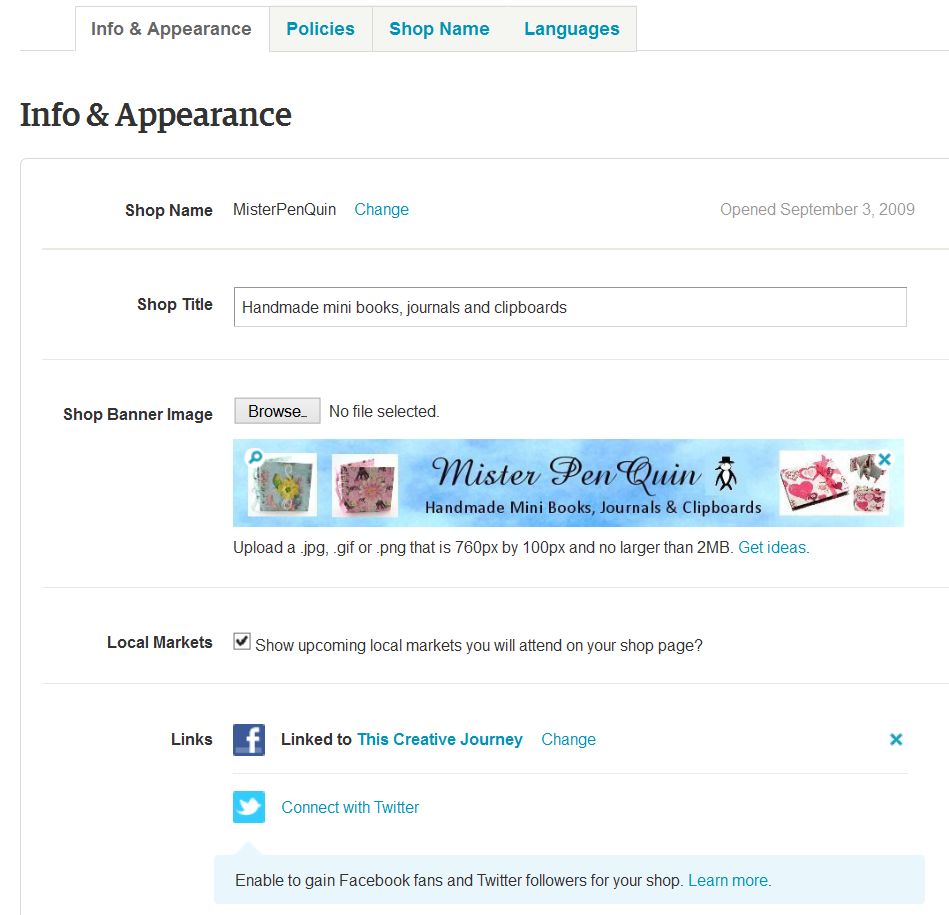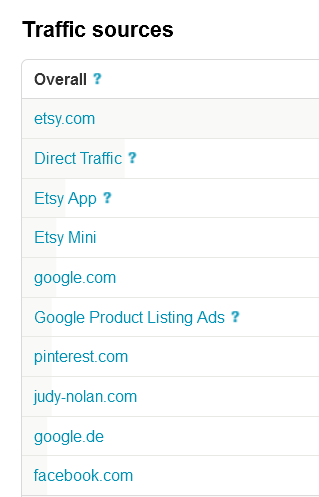In this online world, statistics are gathered everywhere by many different tracking tools, but how and whether you use them is up to you. If nothing else, online statistics provide you with some food for thought, which may lead to a change in your blogging and/or business behavior. Here are a few things that statistics can do for you.
Identify your most popular blog posts
When I first started a blog, I installed a StatCounter plugin that tracks the number of unique views to my Web site. It also tracks many other details, among them what days of the week my site is visited most. I’m sure this is different for everyone, but for me posts on Mondays and Thursdays collect the most visitors, and Friday and Saturday posts collect the fewest. I’d like to say that I use these statistics to determine when to post, but life often intervenes. StatCounter also lists my most popular pages and the number of hits (views) they have garnered. The top five contenders on my site are comprised of six posts and one post tag:
- 1st Place: Embossing with Fiskars texture plates and your Sizzix Big Shot
- 2nd Place: Choosing the best dry adhesives for paper crafting
- 3rd Place: Flow Magazine (tag)
- 4th Place Tie: New uses for old calendars and Finding a place for all those ribbons
- 5th Place Tie: Choosing a binding system for your planner and Making your own light box for product photography
Interestingly, all but one of these links points to a tutorial, which suggests this is what my readers want most to read. I guess it’s a good thing I like to write tutorials! This type of information can help you determine what types of posts will gather the most readers.
Determine the most sought-after items in your Etsy shop
The Stats page of your Etsy shop tracks your views, favorites, orders and revenue for specific periods of time, but it also lists the keywords that site visitors use to find your shop or items in it. If you change the time frame to “All Time,†you can determine what keywords or phrases lead visitors most frequently to your shop. This might suggest to you where you need to concentrate your marketing efforts, or what sections in your shop need your attention. My top five keyword phrases, for example, are as follows:
- Gratitude journal
- Birthday reminder book
- Brag book
- Clipboard
- Mini clipboard
I used this information to set goals for increased numbers of gratitude books and mini photo books (brag books). Obviously I need to also consider adding Save the Date books (birthday reminder books) and clipboards. The fact that visitors search for birthday reminder books more often than Save the Date books is also worth pondering.
The least used keywords might suggest items that need better photos, tags, titles or descriptions—or simply items that you may not wish to carry any longer. If the keywords leading visitors to your shop do not result in sales, you may need to ask yourself why there appears to be a disconnect. Keep in mind that Etsy search algorithms evolve constantly, and be prepared to frequently adjust your tags, titles, descriptions and photos accordingly. You can use these keyword resources to help you target keyword phrases more effectively:
- Etsy Gadget Tool
- Google Adwords Keyword Planner
- Etsy SEO Tips Part 1 – How to create an Etsy SEO keyword list
- Etsy SEO Tips Part 2 – Where to put SEO keywords in your Etsy shop
- Subscribe to the Etsy-Preneurship Thrive community, which discusses and interprets statistics.
Identify your Etsy shop traffic
If you’ve ever asked yourself where your buyers come from, whether it’s worth it to blog, or if you should market yourself through Instagram, Pinterest, Twitter or Facebook, look no further than the “Traffic Sources†section of your Etsy Stats page. When I visited my own page, the following top 10 traffic sources were listed.
While many of these sources are self-explanatory, a few are not. If you click on the question mark for Direct Traffic, for example, you’ll understand that this traffic source represents buyers who type your shop address into their browser bar, bookmark your page, or click on a link in an e-mail message, Instant Message or mobile app. How you can affect the numbers under Direct Traffic is to pass out business cards, include your shop address on packaging materials, include an automated signature (with links) in your e-mails, or provide links within an e-mail newsletter. Let me know in the comments below this post about other ways to address Direct Traffic that I have not mentioned.
When Etsy is referred to as a traffic source, this simply means that the titles, tags, product descriptions—and of course your photos, above all—are working. When someone types a word or phrase into their Etsy search bar, or when they click on a photo located on the site, both are Etsy traffic sources. In fact, if Etsy is not your number one source of traffic on Etsy, you need to ask yourself why it isn’t, and then modify your listings.
References to Facebook, Pinterest, Instagram, Pinterest, Twitter and other types of social media platforms suggest that your shop page, sections or product links are being shared. Obviously, neither the day nor the week is long enough to play with social media and still have time to create, photograph, list products, package, ship, blog, and perform the myriad tasks that Etsy sellers face. Choose the social media platforms that chime with you, and work them effectively. If you haven’t already created a Facebook page for your shop (or even if you have), make sure you link it under your Etsy account’s “Info & Appearances†page.

Please note that a Facebook page for your Etsy shop is not the same thing as your personal Facebook account. For myself, I struggle with what to list as my Facebook page, as I have three active Etsy shops at the moment. I really don’t have time to maintain a social presence on three different Facebook pages, so I’ve created a Facebook page linked to my blog for MisterPenQuin, and a Twitter page linked to my blog for JNOriginals. It’s not ideal, but Etsy does not allow you to link to the same Facebook or Twitter account multiple times if you have multiple shops.
Blog traffic can originate either from your own blog, or from other blogs where you have built a relationship, causing links to your Etsy shop(s) to be shared. Obviously, this is often an “I’ll scratch your back if you scratch mine†type of situation. Read other blogs that share your interests, comment on posts, and link to these posts within your own blog where it’s appropriate. Being genuine is important if you want to maintain relationships with other bloggers!
References to Google or Google Products mean that someone has clicked on a Google Products ad for which Etsy has paid. Did you know that your Etsy products are automatically listed on Google? How visible these listings are is directly related to the effectiveness of your tags, titles, product descriptions and photos. In my case, for whatever reason, the German version of Google, www.google.de, is also listed. I’m not really sure why, but it is one of my top 10 traffic sources. I do read, write and speak German, but I don’t imagine anyone on Google knows or cares.
Some resources that you may find helpful in understanding your own Etsy shop statistics include the following articles:
The decisions we make about our blog posts or the items we sell online are sometimes the result of gut feelings, accurate or not, but it’s nice to know that statistics-tracking tools can help back up some of those decisions with facts. What are your favorite statistics tools for your blogging and/or your business needs, and how do you use them?
© 2015 Judy Nolan. All rights reserved.



Great info! I’m going to go check my stats. (I think you can thank Duni for some of your popularity in Germany.)
It can be quite a task to interpret all the stats sometimes. I do try to pay attention to the key words people are searching for and my top traffic sources. I’ll be honest…sometimes I don’t know what to do with the information though!
Great post! so much information!! I have known about some of these , but appreciate learning some new ones!